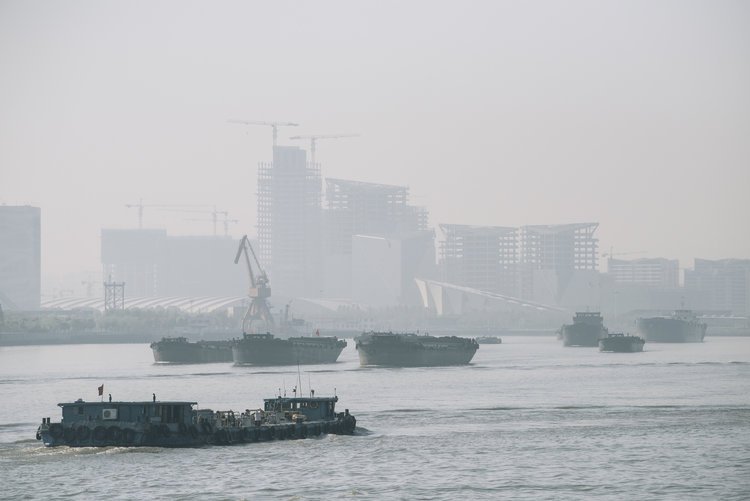SO LONG CHINA, AND THANKS FOR THE FISH!
The Yangtze River is the world's busiest inland waterway, and I've come to run here to see how her water is being protected from pollution and contamination. Photo credit: Kelvin Trautman
1,050 kilometres down, 638 kilometres still to run. I’m in China and have passed the 1,000 km milestone of my 1,688km journey. Today I’m in Shanghai, running along the the world’s busiest inland waterway, the Yangtze River. For me the Yangtze is a metaphor for our global water crises, and there is a particularly hopeful story I'd like to share with you about it.
Known in China as the Cháng Jiāng — which literally means ‘long river’ — the Yangtze is Asia’s longest river. It is also the world’s busiest river, and looking at all the ships going on the water today I am struck by the thought that billions of lives are connected through this river in all the products shipped through here. For thousands of years the waterway has played a critical role in agriculture and transportation. We all know the importance of China in the global economy, so it is incredible to think that some 20% of the People’s Republic of China's GDP is generated in the YangTze river region.
I’ve come to the Yangtze to learn what the Chinese government, together with local water advocates and organisations, are doing to protect the river. At first glance, things do not look good. The air is so polluted that I need a face mask to protect my lungs while I run. And I’d heard that toxicity levels in the river due to pollution had devastated the river ecosystem. There’s a rare river dolphin called baiji -- also known here as ‘the goddess of the Yangtze’ that has been declared extinct.
In 2016, scientists found that one of the hardiest of fish, the wild Chinese sturgeon were no longer breeding in the river. And when a species stops breeding you know it is headed for extinction. These sturgeon have been a part of our world since the Jurassic-Cretaceous era. This means that when dinosaurs were lumbering around sturgeon were swimming upstream to lay their eggs and sustain their species. These sturgeon truly represent the wellbeing of the river ecosystem.
China Daily reports that the government has built 52 water quality monitoring stations to improve controls on the Yangtze. There is also an environmental protection plan that forbids chemical industrial zones in regions near the river.
Furthermore, the central government has announced ‘an emergency rescue mechanism’ to track and protect the Yangtze sturgeon. And the good news is just this month it was announced that the Yangtze sturgeon are starting to make a come-back. After a massive disruption to their breeding patterns, the fish are once again swimming from the sea into the river to spawn.
Amazing how good news puts a spring in your step. So long China, and thanks for the good news about the fish.







